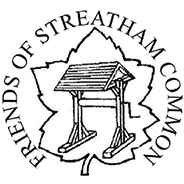Whilst enjoying our beautiful Autumn out on the common, you cant help but notice that many of the Oaks are very misshapen. There is a reason for this and the answer can be found in an article written in our Common Knowledge Newsletter of December 2009 by Peter Newmark.
Perhaps you have noticed that for the past two years there have been many horribly deformed acorns on the Common’s oak trees – or, to be more specific, the pendunculate oaks. At first, generally in August, greenish protuberances appear on the acorns. They then turn reddish and eventually become brown and woody, by which time they have taken over the whole acorn. The deformation is known as a knopper gall. But what causes the gall?
The answer is a minute gall wasp that lays its eggs in the acorn. When the grubs hatch from the eggs they secrete chemicals that cause the gall to grow. The gall encloses the grub providing food and protection. Eventually the grubs pupate into adult wasps.
Strangely, all these adults are females. They make their way to turkey oak trees, which co-exist in our woodlands with the more frequent pendunculate oaks. In the spring, the females lay their eggs on the catkins of the turkey oaks. Both males and females hatch from these eggs. After mating, the females lay their eggs in the pendunculate oaks’ acorns, and the cycle begins again.
Knopper galls were first found in the UK in the 1960s and became widespread in the 1980s. In some years they are found on almost every acorn, while in other years they are hardly evident. At first there was concern that the result would be decreased fertility of the oak trees, but this seems not to be the case.
How do the squirrels and jays that store very large numbers of acorns for the winter cope with the knopper gall? They avoid acorns with the galls. So in bad years – like this one – most of their acorns come from turkey oaks and other species that do not suffer from galls. As a result there will be more turkey oaks, because the spread of oak trees is largely the result of growth from acorns that have been buried and forgotten. With more turkey oaks there are more possibilities for the gall wasp to successfully continue its life cycle. So, like it or not, knopper galls are here to stay.

